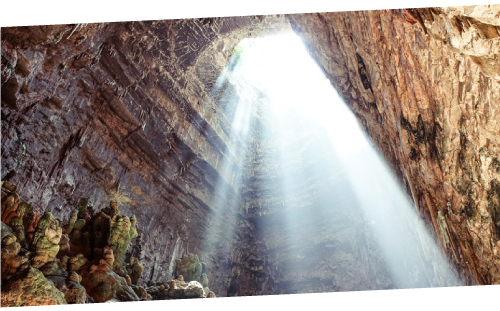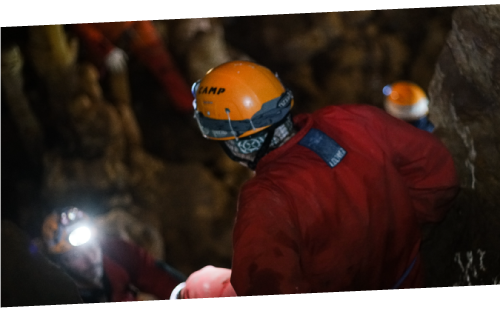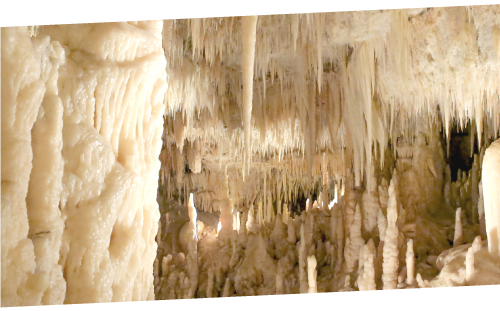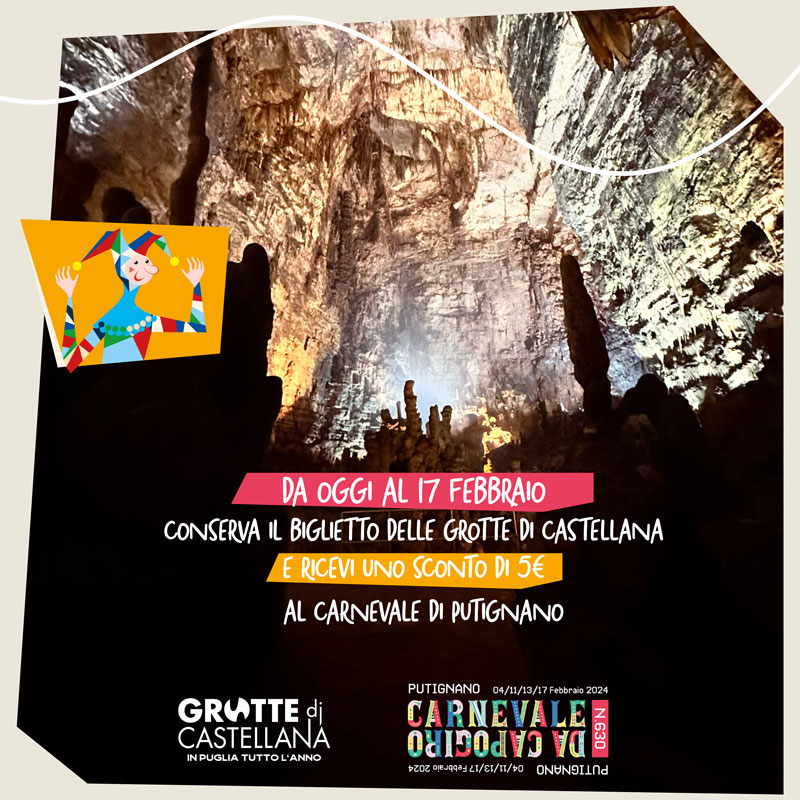THE ORIGIN
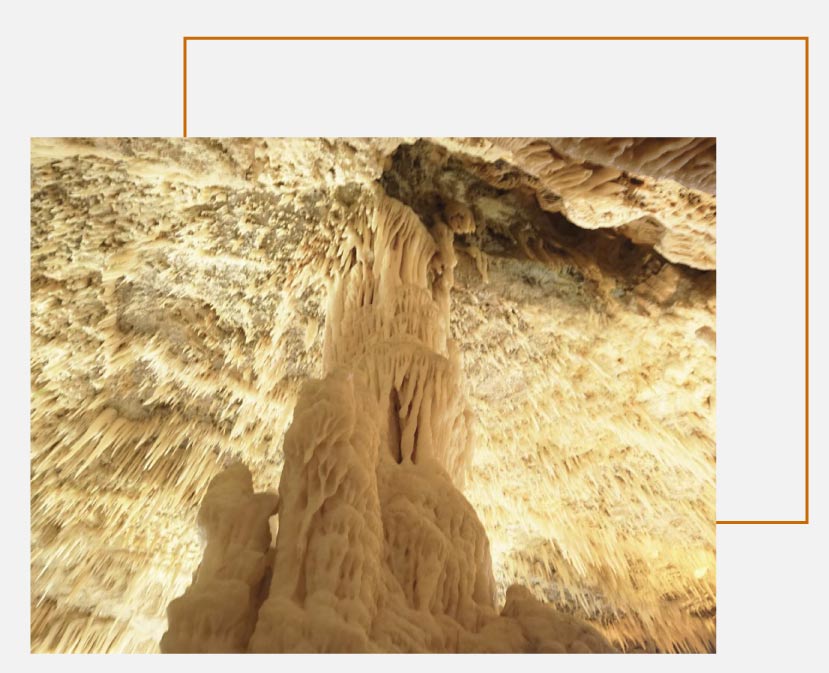
The Genesis
A VAST CAVE SYSTEM

The genesis of the Caves of Castellana, a vast system of caverns that extends for about 3 kilometers at an average depth of 70 meters, is one of the most striking aspects of the Apulian karst.
Karst, a term derived from the Slavic word kar (stone, rock), and used as a toponym for the regions of Venezia Giulia and Slovenia, stands for the set of phenomena produced by the dissolving action exerted by rainwater on the surface and in the subsoil of a certain type of rock, especially limestone.
Beyond serving as a name for those regions, the term now applies to all geographical areas with the same surface and subterranean aspects.
The history of the Caves of Castellana begins in the upper Cretaceous (100 – 90 million years ago), when Puglia was still below sea level of the ancient Mediterranean, inhabited by numerous colonies of mollusks and marine plants.
For millions of years, these life forms had succeeded each other, generations after generations, and their empty shells and carcasses accumulating on the seabed, had formed a gigantic deposit of mud and sand which, with its slow but continuous growth, had gradually compressed to form a layer of limestone with a thickness of several kilometers.
The progressive tectonic uplifting brought the region to its contemporary aspect approximately 65 million years ago, and the emerged limestone masses show extensive cracks due to this process and the rigidity of the limestone itself.
Eluvial deposits of intense rainfall, trickling into the subsoil, then formed an extensive underground aquifer, which gradually dissolved the limestone and widened the cracks, which ended up joining progressively from smaller ducts into larger environments, facilitated by collapses of juxtaposed rocks. Where the cracks intersect in large numbers (a phenomenon most relevant in the “Grave”, more than anywhere else in the cave system of Castellana), extensive and repeated collapses had occurred; these had widened the cave up more and more towards the ceiling, reducing in time the thickness of the rock that separated the cavity from the outside, until the residual layer, finally thinned out and collapsed, allowing the first the ray of light to reach the inside of the “Grave”.
The dripstone formation
THE COATING OF THE BARE WALLS
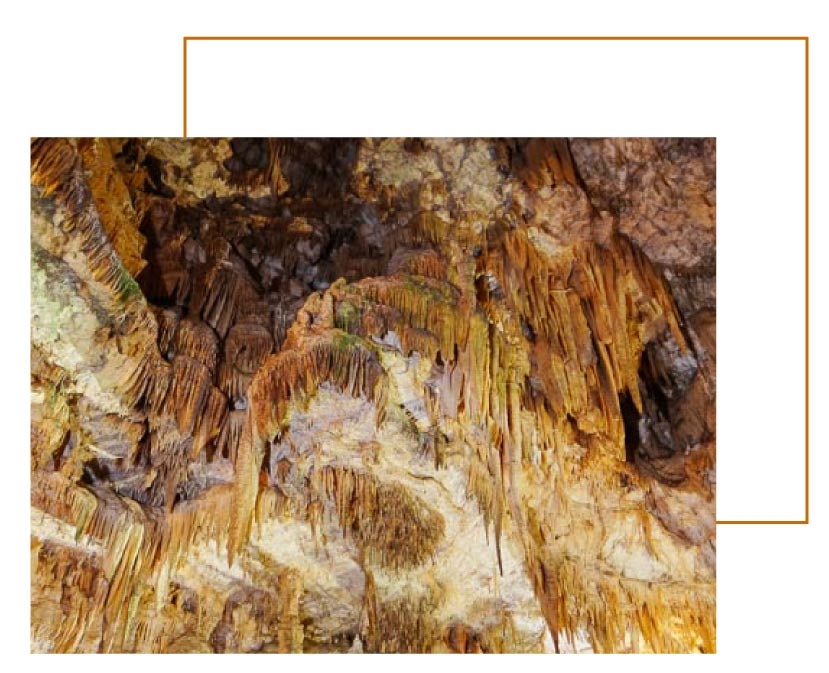
The most fascinating aspect of the aesthetic landscape of the Caves of Castellana is the abundant variety of dripstones; the coating of the bare walls of the caves by calcite deposits which, over a very long time, were brought in by rainwater in its slow seeping through the overlying rocky layers.
Once it reaches the voids of the caverns, the water droplet, falling to the ground, leaves a deposit of calcium carbonate, either on the vault or on the floor, which respectively allows the growth of the stalactites, the formations that hang from the ceiling, and of the underlying stalagmites. Over time, the progressive growth of a stalactite and stalagmite will lead to their union and the formation of a column.
In addition to these common forms, there are many other types of drip-stones, such as flow-stones and curtains, forming due to the flow of water, coralloids and pond crystals, generated in an underwater environment and, finally, helictites, which challenge the law of gravity, and cave pearls, successive layers of calcite originating around a microscopic grain of rock.



